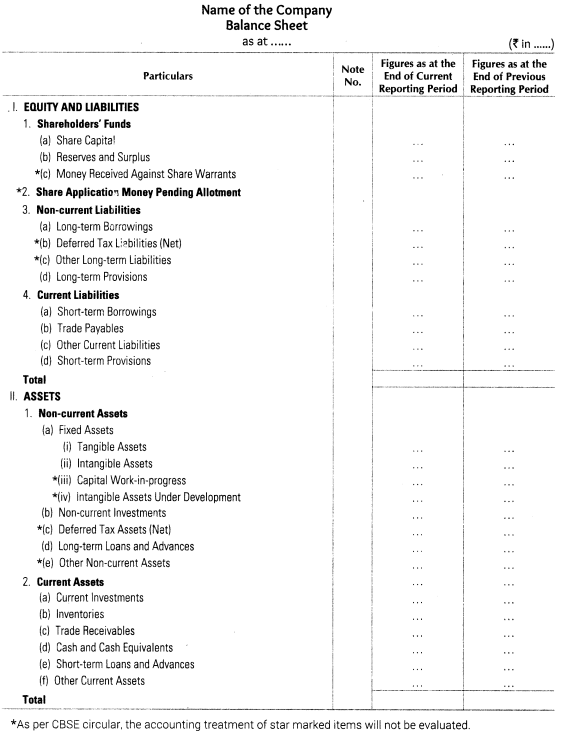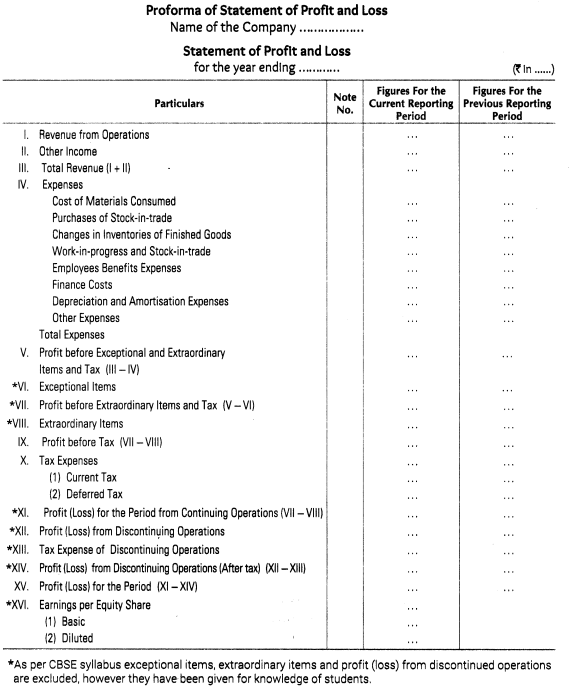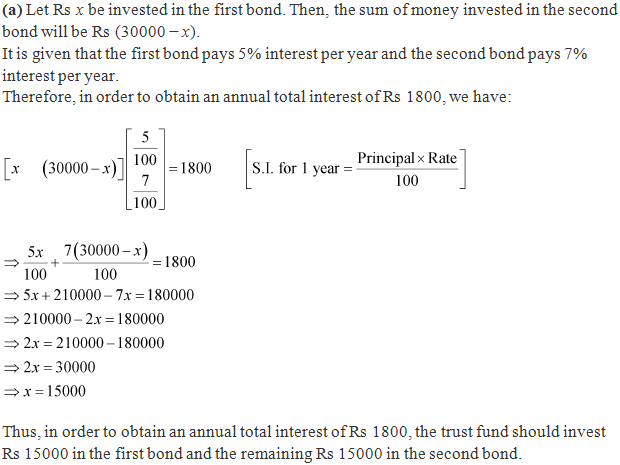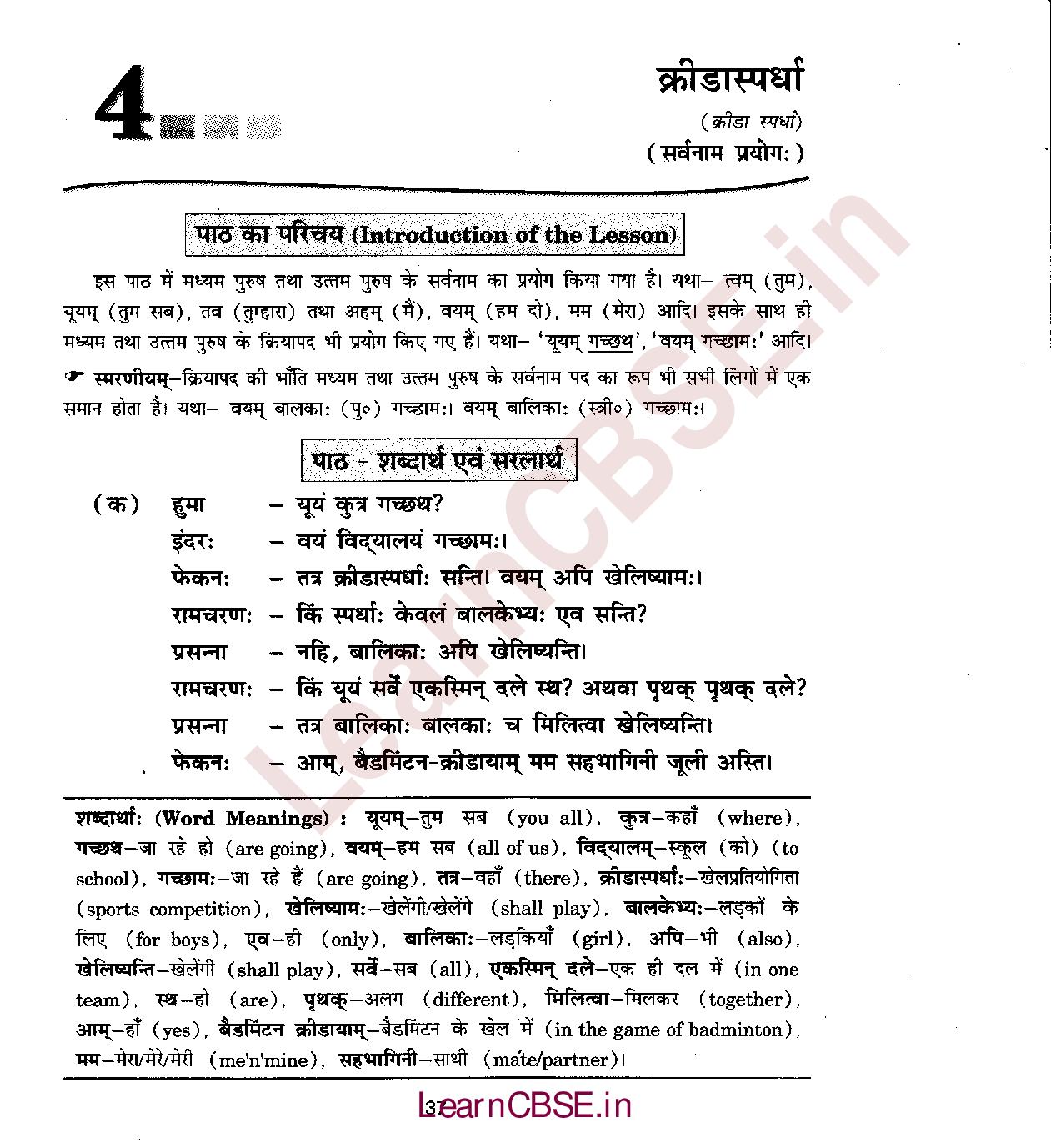Free PDF download of NCERT Solutions for Class 11 Business Studies Chapter 6 Social Responsibilities of Business and Business Ethics solved by Expert Teachers as per NCERT (CBSE) Book guidelines. All Chapter wise Questions with Solutions to help you to revise complete Syllabus and Score More marks in your examinations.
NCERT Solutions For Class 11 Business Studies Social Responsibilities of Business and Business Ethics
NCERT Solutions Class 11 Business StudiesBusiness Studies Sample Papers
TEXTBOOK QUESTIONS SOLVED
I. Multiple Choice Questions
Question 1. Social responsibility is
(a) Same as legal responsibility (b) Broader than legal responsibility
(c) Narrower than legal responsibility (d) None of them
Question 2. If business is to operate in a society which is full of diverse and complicated problems, it may have
(a) Little chance of success (b) Great chance of success
(c) Little chance of failure (d) No relation with success or failure
Question 3. Business people have the skills to solve
(a) All social problems (b) Some social problems
(c) No social problems (d) All economic problems
Question 4. That an enterprise must behave as a good citizen is an example of its responsibility towards
(a) Owners (b) Workers
(c) Consumers (d) Community
Question 5. Environmental protection can best be done by the efforts of
(a) Business people (b) Government
(c) Scientists (d) All the people
Question 6. Carbon monoxide emitted by automobile directly contributes to
(a) Water pollution (b) Noise pollution
(c) Land pollution (d) Air Pollution
Question 7. Which of the following can explain the need for pollution control?
(a) Cost savings (b) Reduced risk of liability
(c) Reduction of health hazards (d) All of them
Question 8. Which of the following is capable of doing maximum good to society?
(a) Business success (b) Laws and regulations
(c) Ethics (d) Professional management
Question 9. Ethics is important for
(a) Top management (b) Middle-level managers
(c) Non-managerial employees (d) All of them
Question 10. Which of the following alone can ensure effective ethics programme in a business enterprise?
(a) Publication of code
(b) Involvement of employees
(c) Establishment of compliance mechanisms
(d) None of them
Answers:
1. (b) 2. (a) 3. (b) 4. (d) 5. (d)
6. (d) 7. (c) 8. (c) 9. (d) 10. (c)
II. Short Answer Type Questions
Question 1. What do you understand by social responsibility of business? How is it different from legal responsibility?
Answer: Social responsibility of business refers to its obligation to take those decisions and perform those actions which are desirable in terms of the objective and values of our society. It refers to the obligation of business towards various social groups like employees, consumers, investors, government etc. In the words of H. R. Bowen, “Social responsibility of business is to pursue those policies, to make those decisions or to follow those lines of action which are desirable in terms of the objectives and values of our society
Legal responsibility is the responsibility that a business has by virtue of law. Differences between Social and Legal Responsibility.
- Legal responsibility is compulsory under any of the laws, acts and constitution. Social responsibility is not backed by legal provisions.
- Legal responsibility is compulsion while social responsibility is a choice.
- Many a time, legal responsibility is fulfilled in the name of social responsibility.
- There are no punishments for organizations not following their social responsibility but legal action can be taken against organizations not following their legal responsibility.
Question 2. What is environment? What is environmental pollution?
Answer: By environment, we mean our surroundings, which have an impact on our lives. It is the sum total of the surroundings and resources, including both biotic resources (i.e., living creatures such as plants and animals) and abiotic resources (i.e., non-living things, such as air, water and land) that affect our existence and quality of life. However, because of the rapid increase in population and industrialisation, the excessive use of resources has resulted in their degradation and depletion. Also, the discharge of harmful substances into the environment has contributed towards pollution. Environmental pollution can be classified into the following four types.
- Air Pollution: It is caused by the emission of harmful gases into the atmosphere.
- Water Pollution: It is caused by the discharge of industrial and household wastes into the rivers, thereby degrading the quality of water.
- Land Pollution: This is caused by dumping toxic wastes on land, which in turn damages it, making it unfit for agriculture.
- Noise Pollution: It is caused by noise from factories and vehicles, which may cause serious health problems such as loss of hearing or mental disorders.
Question 3. What is business ethics? Mention the basic elements of business ethics.
Answer: Business ethics refers to the values and principles that govern the behaviour of individuals in an organisation such that the business activities are desirable from the viewpoint of society. The main purpose of business ethics is to guide managers and other employees to perform their jobs in a manner that is socially acceptable.
The following are some of the elements of business ethics.
- Top management commitment: Top-level officers, such as CEO’s and senior managers, must strongly follow the ethical codes and guide the other employees in adopting such behaviour.
- Publication of a code: Enterprises must clearly define the ethical code of conduct, which would include quality standards, laws governing production and health and safety standards for the employees.
- Establishment of compliance mechanism: In addition to standards, an enterprise must also devise a mechanism through which compliance with the code of conduct can be measured.
- Involvement of employees at all levels: The successful implementation of ethical standards requires the involvement of all the employees at all levels.
- Measurement of results: Although it is difficult to measure the end results of implementation of ethical standards, the top management should take steps to measure the degree of compliance with the ethical codes.
Question 4. Briefly explain (a) Air pollution, (b) Water pollution, and (c) Land pollution.
Answer: (a) Air Pollution: This kind of pollution is caused by the emission of harmful gases into the atmosphere. Smoke and chemicals emitted by factories and vehicles degrade the air quality and causes air pollution.
(b) Water Pollution: Discharge of industrial and household wastes into rivers, streams or lakes causes degradation of the water quality. Over time, the increase in water pollution often results in the deaths of several animals and poses serious threats to human beings.
(c) Land Pollution: This is caused due to the dumping of toxic materials and wastes on land, which in turn damages the quality of land, making it unfit and unproductive for agriculture and crop plantation.
Question 5. What are the major areas of social responsibility of business?
Answer: Major areas for social responsibility of business are given below:
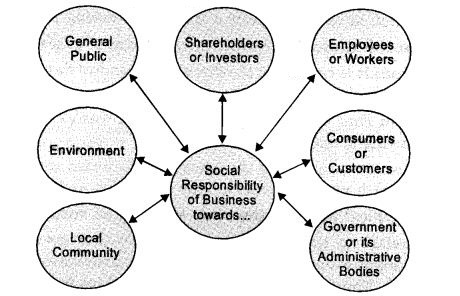
- Shareholders or investors who contribute funds for business.
- Employees and others that make up its personnel.
- Consumers or customers who consume and/or use its outputs (products and/or services).
- Government and local administrative bodies that regulate its commercial activities in their jurisdictions.
- Members of a local community who are either directly or indirectly influenced by its activities in their area.
- Surrounding environment of a location from where it operates.
- The general public that makes up a big part of society.
III. Long Answer Type Questions
Question 1. Build up arguments for and against social responsibilities.
Answer: Arguments for Social Responsibility:
- Justification for Existence and Growth: Although the main motive of any business is profit but the prosperity and growth of business is not possible without a continuous service to the society. Therefore, it is justified for a business to assume social responsibility.
- Avoidance of Government Regulation: Businessmen can avoid the problem of government regulations by assuming social responsibilities voluntarily which helps to reduce the need for new laws.
- Maintenance of Society: Those people who do not get a return for their hardships get indulged in anti-legal activities. Therefore, it is advisable for business enterprises to assume their social responsibilities.
- Long Term Interest of the Firm: If consumers, workers, shareholders, government officials feel that they are not getting what they deserve, they start to withdraw their hands from business. It may prove more expensive for an enterprise.
- Availability of Resources with Business: A business enterprise has effective human and financial resources to solve many of the social problems.
- Converting Problems into Opportunities: Business can make risky situations useful by using their efficiency.
- Better Environment for Doing Business: Business system should do something to meet needs before it is confronted with a situation when its own survival is endangered.
- Holding Business responsible for Social Problems: Environmental pollution, unsafe workplaces, corruption in public institutions and discriminatory practices in employment are some of the problems which have caused due to business enterprises.
Arguments against Social Responsibility:
- Violation of Profit Maximization: As per this argument, business enterprises claim that our objective is profit maximization. Business can reduce its cost and raise profits and then only it can meet its social responsibility.
- Lack of Social Skills: Business enterprises neither have skill nor experience to solve all types of social problems. Therefore, it should be handled by specialized agencies.
- Burden on Consumers: Many of the social responsibilities cost a lot and its burden falls on consumers only.
- Lack of Broad Public Support: Business cannot operate successfully because of lack of cooperation and confidence on behalf of public to business enterprises.
Question 2. Discuss the forces which are responsible for increasing concern of business enterprises towards social responsibility.
Answer: The following are the forces which are responsible for increasing the concern of business enterprises for social responsibility.
- Threat of Public Regulation: The government is meant to safeguard the interests of society. Thus, in case the government feels that a business enterprise is behaving in a manner that is not socially desirable, then it can regulate the operations of that enterprise accordingly.
- Pressure of Labour Movement: The increase in capital mobility over time has increased the pressure on business enterprises to pay attention to the welfare of workers, by providing them with healthy working conditions along with good remuneration.
- Impact of Consumer Consciousness: As consumers today are aware of their rights and responsibilities, they take their decisions more rationally. Thus, business enterprises are made to work more efficiently and produce better products at reasonable rates to satisfy their customers.
- Development of Social Standards: Business enterprises are not merely profit-making entities. For their long-term growth and existence, they require fulfilling the new standards of social welfare.
- Development of Business Education: The spread of education over time has made consumers, investors, employees and owners aware of social problems, thereby making them more sensitive to social issues.
- Relationship Between Social Interest and Business Interest: No business enterprise can work in isolation from society. Thus, there should be a balance between business interests and social interests, such that the business can grow by doing the maximum good to society.
- Development of a Professional Managerial Class: Every business professional pursues the goal of profit maximization. But today’s professional managers make efforts to satisfy the interests of all members of society.
Question 3. ‘Business is essentially, a social institution and not merely a profit making activity.’ Explain.
Answer: The primary objective of any business enterprise is profit maximization. This is because profit acts as a measure of success and at the same time is the main source of income for an enterprise. Also, profits are often used to finance the expansion projects of a business enterprise. However, it is argued that business enterprises are not merely profit-making entities. They are considered as social institutions, too, as they are created by society. As every business makes use of society’s resources in terms of human and physical capital, it cannot work in isolation from society. Its operations are affected by social problems such as unemployment and poverty. Thus, a need arises to create a balance between the business interests and social interests of a business enterprise, such that it can grow by doing the maximum good to society. Hence, we can say that a business enterprise is a social institution and not merely a profit-making entity. In this regard, the following are some of the responsibilities that must be fulfilled by an enterprise:
- Paying taxes on time.
- Paying fair wages to employees.
- Supplying quality products at reasonable prices to customers.
- Cooperating with the government in solving social problems, such as unemployment, poverty and illiteracy.
A business has some responsibility towards:
- Shareholders or investors who contribute funds for business.
- Employees and others that make up its personnel.
- Consumers or customers who consume and/or use its outputs (products and/or services).
- Government and local administrative bodies that regulate its commercial activities in their jurisdictions.
- Members of a local community who are either directly or indirectly influenced by its activities in their area.
- Surrounding environment of a location from where it operates.
- The general public that makes up a big part of society.
Question 4. Why do the enterprises need to adopt pollution control measures?
Answer: Pollution control is necessary for preserving and improving the quality of environmental resources. As business activities such as production, transportation, distribution, storage and consumption are often assumed to cause the maximum destruction to society’s resources, a need arises for adopting pollution control measures. Following are some of the reasons why business enterprises need to adopt pollution control measures,
- Reduced health hazards: Pollutants in the environment cause diseases such as cancers and respiratory problems. Thus, pollution control measures will not only
help in reducing the incidence of diseases but also help people enjoy a good and healthy life.
- Reduced risk of liability: Enterprises are often held responsible for polluting the environment and are asked to compensate. Pollution control helps in reducing the risk of such liabilities.
- Cost savings: Efficient pollution control mechanisms help in reducing the cost of waste disposal and the cost of cleaning up production plants. This in turn helps firms to reduce their costs.
- Improved public image: An increase in the education level has made people more aware about environmental problems. As a result, they have started realising the need to protect the environment. Thus, business enterprises which adopt pollution control measures enjoy a good reputation in the society.
- Other social benefits: Pollution control helps a firm to enjoy various other benefits such as cleaner surroundings, better quality of life for its employees as well as owners and increased availability of good quality resources.
Question 5. What steps can an enterprise take to protect the environment from the dangers of pollution?
Answer: Various business activities such as production, transportation and consumption of goods often result in over exploitation of natural resources. Thus, it is the responsibility of every business enterprise to control discharge of pollutants into the environment. The following steps can be taken by the business enterprises to control pollution.
- Control by top managers: The top management of every organisation should be committed to creating, developing and maintaining a work culture conducive to environmental protection and pollution prevention.
- Control by employees: Employees at all the levels of an organisation should be committed to keeping the environment clean and protected.
- Better technology: Enterprises should employ good and superior technologies of production and use scientific techniques for waste disposal. This will ensure environmental protection and pollution control.
- Follow rules: Enterprises must conform to the rules and regulations enacted by the government for the prevention of environmental pollution.
- Increased awareness: By conducting workshops and training programmes, business enterprises must make an effort to spread awareness among its employees of the need to conserve the environment.
- Assessment programmes: An efficient mechanism for the periodic assessment of pollution control programmes may also be adopted, in order to weigh their costs and benefits.
Question 6. Explain the various elements of business ethics.
Answer: Business ethics can be defined as the code of conduct that a business must follow, such that it takes up only those activities that are desirable from the viewpoint of society. The purpose of business ethics is to guide managers and other employees in an organisation in performing their jobs in a manner that is socially acceptable. Business ethics should be followed in the day-to-day working of a business enterprise. The following are some of the elements of business ethics.
- Commitment by top management: Top-level officers, such as the CEO’s and other higher level managers, must sincerely follow the ethical code of conduct. They should also guide other employees in their organisation in adopting the code.
- Publication of a code: An enterprise must clearly define the ethical code of conduct to be followed in the organisation. The code should include quality standards for work, laws governing production and employee’s health and safety standards.
- Establishment of compliance mechanism: In addition to setting performance standards, an enterprise must also devise a mechanism through which it can measure the actions of individual employees. This should be done in order to confirm whether the ethical standards are being met.
- Involvement of employees at all levels: The successful implementation of ethical standards depends to a large extent on the involvement of employees at different levels. This is because it is the employees who actually implement the ethical codes.
- Measurement of results: Although it is difficult to measure the end results of implementation of ethical standards, the top management should take steps to monitor compliance. Also, it must take serious action against any unethical behaviour in the organisation.
MORE QUESTIONS SOLVED
I. Very Short Answer Type Questions
Question 1. Define corporate social responsibility.
Answer: Corporate social responsibility is a comprehensive set of policies, practices and programmes which are integrated into business operations, supply claims, and decision making process throughout the company, wherever the company does business and includes responsibility for current actions as well as past and future actions.
Question 2. What is the relation between ethics and moral values?
Answer: Ethics refer to the entire body of moral values which a society attaches to the actions of human beings.
Question 3. What do you mean by the principles derived from social values which guide and govern the conduct of businessmen?
Answer: Business ethics are principles derived from social values which guide and govern the conduct of businessmen.
Question 4. Mention two responsibilities of business towards customers.
Answer: Supply of right quality of goods and proper precaution against adulteration.
Question 5. Give any two reasons supporting social responsibilities.
Answer: (i) It is in long term interest of the business.
(ii) It is justified for growth and existence of business.
Question 6. Give any two reasons against social obligation.
Answer: (i) It violates the goal of profit maximization (ii) Its burden falls on consumers.
Question 7. Name any two factors which affect the ethical behaviour of a business.
Answer: Awareness amongst people, overall environment of the area where business is located.
Question 8. Define pollution.
Answer: Pollution is change in the physical, chemical and biological characteristics, air, land and water.
Question 9. Give any one point of difference between ethics and law.
Answer: Ethics are self-imposed while laws are imposed by an external governing authority.
Question 10. Do businessmen have skill to tackle social problems?
Answer: Yes, businessmen have skills to tackle some but not all social problems.
Question 11. What is environmental pollution?
Answer: When the quality of environment degrades due to mixture of unwanted elements in it, it is called environmental pollution.
Question 12. What is the reality of social responsibilities?
Answer: In reality, social responsibility takes form of lip service only. There is no genuine effort from a business. Many a time firms play their legal roles in the name of social responsibility.
Question 13. What is code of ethics?
Answer: An enterprise must clearly define the ethical code of conduct to be followed in the organisation. The code should include quality standards for work, laws governing production and employee’s health and safety standards.
Question 14. Give any one difference between ethics and law.
Answer: Business ethics refer to the socially determined moral principles which should govern business activities. Laws are determined by the legal bodies of a country.
II. Short Answer Type Questions
Question 1. What are the core objectives of social responsibility of business?
Answer: The core objectives of social responsibility of business are as follows:
- It is a concept that implies a business must operate (function) with a firm mindset to protect and promote the interest and welfare of society.
- Profit (earned through any means) must not be its only highest objective else
contributions made for betterment and progress of a society must also be given a prime importance.
- It must fulfill its social responsibilities honestly in regard to the welfare of society in which it operates and whose resources and infrastructures it makes use of to earn huge profits.
- It should never neglect (avoid) its responsibilities towards society in which it flourishes.
Question 2. What are the obligations of a business in the name of social responsibility?
Answer: The social responsibility of business comprises of the following obligations:
- A business must give a proper dividend to its shareholders or investors.
- It must provide fair wages and salaries with good working conditions.
- It must provide a regular supply of good quality goods and/or services to its consumers/customers at reasonable prices.
- It must abide by all government rules and regulations, support its business related policies and should pay fair taxes without keeping any delays or dues.
- It must also contribute for the betterment of a local community by doing generous activities like building schools, colleges, hospitals, etc.
- It must take immense care to see that its activities neither directly nor indirectly create havoc on the vitality of its surrounding environment.
- It should maintain a stringent policy to curb or control pollution in regard to contamination of air, water, land, sound and radiation leakages. It must hire experienced professional individuals who are experts in their respective fields.
- It should also offer social-welfare services to the general public.
Question 3. Name any four elements of business ethics.
Answer: Business ethics can be defined as the code of conduct that a business must follow, such that it takes up only those activities that are desirable from the viewpoint of society. The purpose of business ethics is to guide managers and other employees in an organisation in performing their jobs in a manner that is socially acceptable.
The following are some of the elements of business ethics.
- Top-level officers, such as the CEO’s and other higher level managers, must sincerely follow the ethical code of conduct. They should also guide other employees in their organisation in adopting the code.
- An enterprise must clearly define the ethical code of conduct to be followed in the organisation. The code should include quality standards for work, laws governing production and employee’s health and safety standards.
- In addition to setting performance standards, an enterprise must also devise a mechanism through which it can measure the actions of individual employees. This should be done in order to confirm whether the ethical standards are being met.
- The successful implementation of ethical standards depends to a large extent on the involvement of employees at different levels. This is because it is the employees who actually implement the ethical codes.
- Although it is difficult to measure the end results of implementation of ethical standards, the top management should take steps to monitor compliance. Also, it must take serious action against any unethical behaviour in the organisation.
Question 4. Explain the obligations of business towards owners and investors.
Answer: It is the responsibility of a business to pay attention on the maintenance and expansion of returns for all of its shareholders on important management issue, and constantly strives to improve its business performance and financial structure. The company’s dividend policy calls for maintaining stable dividends, and Casio determines the allocation of profit by taking into account all factors such as profit levels, financial position, the dividend pay out ratio, and future business development and forecasts.
Question 5. How can a business enterprise improve its public image by performing social responsibilities?
Answer: Public relations is a potent tool for shaping consumer perception and building a company’s image. Corporations that actively promote their social responsibility activities often take steps to publicise these efforts through the media. Getting the word out about corporate donations, employee volunteer programmes, or other CSR initiatives is a powerful branding tool that can build publicity for you in both online and print media.
Question.6. What obligation does a businessman have towards the government?
Answer: Social responsibility of business towards government’s regulatory bodies or agencies is quite sensitive from the license point of view. If permission is not granted or revoked abruptly, it can result in huge losses to an organization. Therefore, compliance in this regard is necessary.
Furthermore, a business must also function within the demarcation of rules and policies as formulated from time to time by the government of state or nation. It should respect laws and abide by all established regulations while performing within the jurisdiction of state.
Some examples of activities a business can do in this regard:
- Paying fair taxes on time,
- Following labor, environmental and other laws, etc.
- Seeking permissions wherever necessary,
- Licensing an organization,
If laws are respected and followed, it creates goodwill of business in the eyes of authorities. Overall, if a government is satisfied it will make favourable commercial policies, which will ultimately open new opportunities and finally benefit the organization sooner or later.
Question 7. Give any four reasons against the social responsibilities of business.
Answer: Arguments against social responsibility
- Violation of Profit Maximisation: As per this argument, business enterprises claim that our objective is profit maximisation. Business can reduce its cost and raise profits and then only it can meet its social responsibility.
- Lack of Social Skills: Business enterprises neither have skill nor experience to solve all types of social problems. Therefore, it should be handled by specialised agencies.
- Burden on Consumers: Many of the social responsibilities cost a lot and its burden falls on consumers only.
- Lack of Broad Public Support: Business cannot operate successfully because of lack of cooperation and confidence from public to business enterprises.
Question 8. What are the responsibilities of business towards employees and customers?
Answer: Social responsibility of business towards its employees: It is important because they are the wheels of an organization. Without their support, the commercial institution simply can’t function or operate.
If a business takes care of the needs of its human resource (for e.g. office staff, employees, workers, etc.) wisely, it will boost the motivation and working spirit within an organization. A happy employee usually gives his best to the organization in terms of quality labour and timely output than an unsatisfied one. A pleasant working environment helps in improving the efficiency and productivity of working people. A
good remuneration policy attracts new talented professionals who can further contribute to its growth and expansion.Thus, if personnel are satisfied, then they will work together very hard and aid in increasing the production, sales and profit.
Social responsibility of business towards its consumers or customers: It matters a lot from sales and profit point of view. Its success is directly dependent on their level of satisfaction. Higher their rate of satisfaction, greater is the chances to succeed.
If a business rolls out good-quality products and/or delivers better quality services that too at reasonable prices, then it is natural to attract lots of customers. If the quality- price ratio is maintained well and consumers get worth for their money spends, this will surely satisfy them. In the long run, customer loyalty and retention will grow, and this will ultimately lead to profitability.
Question 9. Describe the obligations of business towards owners and shareholders .
Answer: Social responsibility of business towards its shareholders or investors is most important of all other obligations.
If a business satisfies its investors, they are likely to invest more money in a project. As a result, more funds will flow in and the same can be utilized to modernise, expand and diversify the existing activities on a larger scale. Happy financiers can fulfill the rising demand of funds needed for its growth and expansion.
- They need to give a fair return to shareholders.
- They need to give true and fair information to shareholders.
- They need to give them proper opportunity to participate.
Question 10. Which eight problems have been identified by the United Nations which cause damage to natural environment?
Answer: Following eight problems have been identified by the United Nations which cause damage to natural environment:
1. Ozone depletion 2. Global warming
3. Fresh water quality and quantity 4. Deforestation
5. Land degradation 6. Solid and hazardous waste
7. Water pollution 8. Danger to biological diversity.
III. Long Answer Type Questions
Question 1. Social responsibility is not an area of business. Do you agree? Justify.
Answer: It can be justified by considering case for and case against social responsibility:
The case in favour of taking up social responsibilities.
- Existence and growth: Business enterprises exist to make profits by providing goods and services to consumers. Thus, we can say that their long-term growth prospect depends not only on their profits but also on how efficiently they serve the society. Therefore, taking up social responsibilities supports the existence and growth of a business enterprise.
- Avoidance of government intervention: Business enterprises should always work in line with society’s values and ethics. This would help them fulfill their social responsibilities, which in turn would make them less prone to government intervention.
- Better environment for doing business: Businesses make use of society’s resource of human capital. Thus, by providing employment to people, they help solve the social problems of unemployment and poverty, thereby creating a favorable environment for business.
The case against taking up social responsibilities:
- Violation of profit maximization objectives: It is argued that a business enterprise exists to make a profit. Thus, if it engages itself in solving social problems, then it may not have enough resources to meet its primary objective of profit maximization.
- Burden on consumers: It is argued that when a business enterprise is engaged in solving social problems such as environment pollution and unemployment, its expenditures increase. This increased financial burden is ultimately passed on to the consumers in the form of higher prices of products.
- Lack of social skills: Business persons are basically trained to solve business- related problems such as minimizing cost, maximizing profits and increasing sales. However, they are not specialised in solving social problems. Thus, it is argued that social problems must be solved only by specialised agencies, which have the required training and skills.
Question 2. Explain the need for social responsibility.
Answer: Need of social responsibility is essentially a moral question because it can be answered differently by different people depending on what is right and what is wrong for a person. Social responsibility is needed to be followed because:
- Showing a true commitment: The most successful corporate social responsibility programmes integrate these two types of CSR together to show a true commitment to a cause. For example, a company that uses sustainable materials in their products, donates financial resources to environmental causes, and allows employees to take paid time off for volunteering at environmental charities would be showing a true commitment to the environment that goes beyond any single CSR initiative.
- Social media visibility: One of the reasons that corporations should have visible CSR campaigns is due to the importance and prevalence of social media. Corporations that want to protect their brand understand that social media is an integral part of public perception. When a corporation exercises social responsibility in the form of fund raising or setting up employee giving programmes, using social media to promote these actions helps to create a positive branding environment and it is a great way to engage with your audience on a deeper level that goes beyond your products or services.
- Public relations benefits: Public relations is a potent tool for shaping consumer perception and building a company’s image. Corporations that actively promote their social responsibility activities often take steps to publicise these efforts through the media. Getting the word out about corporate donations, employee volunteer programmes, or other CSR initiatives is a powerful branding tool that can build publicity for you in both online and print media.
- Government relations: Corporations that put an emphasis oh corporate social responsibility typically have an easier experience when dealing with politicians and government regulators. In contrast, businesses that present a reckless disregard for social responsibility tend to find themselves finding off various inquiries and probes, often brought on*at the insistence of public service organizations. The more positive the public perception is that a corporation takes social responsibility seriously, the less likely it is that activist groups will launch public campaigns and demand government inquiries against it.
- Building a positive workplace environment: Finally, one of the greatest benefits of promoting social responsibility in the workplace is the positive environment you build for your employees. When employees and management feel they are working for a company that has a true conscience, they will likely be more enthusiastic and engaged in their jobs. This can build a sense of community and teamwork which brings everyone together and leads to happier, more productive employees.
Question 3. What is corporate social responsibility? Is it similar to business ethics?
Answer: The World Business Council for Sustainable Development in its publication Making Good Business Sense by Lord Holme and Richard Watts, used the following definition. Corporate Social Responsibility is the continuing commitment by business to behave ethically and contribute to economic development while improving the quality of life of the workforce and their families as well as of the local community and society at large. The same report gave some evidence of the different perceptions of what this should mean from a number of different societies across the world.
Definition: CSR is about capacity building for sustainable livelihoods.
It respects cultural differences and finds the business opportunities in building the skills of employees, the community and the Government from Ghana, through to CSR is about business giving back to society from the Philippines.
Traditionally in the United States, CSR has been defined much more in terms of a philanthropic model. Companies make profits, unhindered except by fulfilling their duty to pay taxes. Then they donate a certain share of the profits to charitable causes. It is seen as tainting the act for the company to receive any benefit from the giving. It is not same as business ethics. Business ethics is a personal concept and is wider in many senses than CSR.
Question 4. Why should a business do any thing for society at large?
Answer: The term “Corporate Social Responsibility” is still widely used even though related concepts, such as sustainability, corporate citizenship, business ethics, stakeholder management, corporate responsibility, and corporate social performance, are vying to replace it. In different ways, these expressions refer to the ensemble of policies, practices, investments, and concrete results deployed and achieved by a business corporation in the pursuit of its stakeholders’ interests.
There is no single CSR business case—no single rationalisation for how CSR improves the bottom line. Over the years, researchers have developed many arguments. In general, these arguments can be grouped based on approach, topics addressed, and underlying assumptions about how value is created and defined. According to this categorization, CSR is a viable business choice as it is a tool to:
- implement cost and risk reductions;
- gain competitive advantage;
- develop corporate reputation and legitimacy; and
- seek win-win outcomes through synergistic value creation.
Question 5. Explain the reality of social responsibility.
Answer: In reality, social responsibility receives only lip service. Some business houses fulfill its legal responsibility in the name of social responsibility. There are some factors and reasons which have forced and persuaded business organizations to fulfill their social responsibility which are as follows:
- Threat of public regulation: India is a democracy where Government is expected to be welfare state. If any business organization acts in a socially irresponsible manner, then an action may be taken against them to safeguard people’s interest. In reality, business houses do not assume their social responsibility on their own but due to threat of public action.
- Pressure of labour movement: In the last century, labour movement for extracting gains for the working class throughout the world has become powerful. Labour laws are also followed not out of a sense of social responsibility but because of increasing pressure of labour movement.
- Impact of consumer consciousness: Consumers are also becoming aware of their rights since enactment of Consumer Protection Act, 1986. Under this Act, consumers are entitled to file a case if he is cheated in any ways.
- Development of social standard for business: As per new social standards, a business is considered to be legitimate only if it fulfills its social responsibilities. No business can be done in isolation with the society. The performance of a business is judged on social standards.
- Development of business education: Nowadays businessmen are professionally qualified due to changing pattern of form of business. It is also making it socially more responsible. Education has made people more conscious as employees, customers, investors and owners.
- Relationship between social interest and business interest: Businessmen are able to find that social interest and business interest are correlated. The concept which existed earlier that no business can grow without exploitation of others does not exist any more.
- Development of professional, managerial class: Professional management is also educated of the benefits it can get by fulfilling its social responsibility. Professional managers are more interested in satisfying a multiple group of interest groups in society for running their enterprises successfully than attaining goal of profit maximization only.
Question 6. “A business owes curtain obligations towards different groups.” Identify those groups and explain the obligation of business towards those groups.
Or
Explain social responsibility of a business towards different interest groups.
Answer: Social responsibility of government towards different groups is explained below:
- Shareholders or investors: Social responsibility of business towards its shareholders or investors is most important of all other obligations.
If a business satisfies its funders, they are likely to invest more money in a project. As a result, more funds will flow in and the same can be utilised to modernize, expand and diversify the existing activities on a larger scale. Happy financiers can fulfill the rising demand of funds needed for its growth and expansion.
- Personnel: Social responsibility of business towards its personnel is important because they are the wheels of an organization. Without their support, the commercial institution simply can’t function or operate.
If a business takes care of the needs of its human resource (for e.g. of office staff, employees, workers, etc.) wisely, it will boost the motivation and working spirit within an organization. A happy employee usually gives his best to the organization in terms of quality labour and timely output than an unsatisfied one. A pleasant working environment helps in improving the efficiency and productivity of working people. A good remuneration policy attracts new talented professionals who can further contribute in its growth and expansion.
Thus, if personnel are satisfied, then they will work together very hard and aid in increasing the production, sales and profit.
- Consumers or customers: Social responsibility of business towards its consumers or customers matters a lot from sales and profit point of view. Its success is directly dependent on their level of satisfaction. Higher their rate of satisfaction greater is the chances to succeed.
If a business rolls out good-quality products and/or delivers better quality services that too at reasonable prices, then it is natural to attract lots of customers. If the quality-price ratio is maintained well and consumers get worth for their money spends, this will surely satisfy them. In the long run, customer loyalty and retention will grow, and this will ultimately lead to profitability.
- Government: Social responsibility of business towards government’s regulatory bodies or agencies is quite sensitive from the license’s point of view. If permission is not granted or revoked abruptly, it can result in huge losses to an organization. Therefore, compliance in this regard is necessary.
Furthermore, a business must also function within the demarcation of rules and policies as formulated from time to time by the government of state or nation. It should respect laws and abide by all established regulations while performing within the jurisdiction of state.
Some examples of activities a business can do in this regard:
(a) Licensing an organization,
(b) Seeking permissions wherever necessary,
(c) Paying fair taxes on time,
(d) Following labour, environmental and other laws, etc.
(e) If laws are respected and followed, it creates goodwill of business in the eyes of authorities. Overall, if a government is satisfied it will make favourable commercial policies, which will ultimately open new opportunities and finally benefit the organization sooner or later.
Therefore, satisfaction of government and local administrative bodies is equally important for legal continuation of business.
- Local community: Social responsibility of business towards the local community of its established area is significant. This is essential for smooth functioning of its activities without any agitations or hindrances.
A business has a responsibility towards the local community besides which it is established and operates from. Industrial activities carried out in a local area affect the lives of many people who reside in and around it. So, as a compensation for their hardship, an organization must do something or other to alleviate the intensity of suffering.
(a) As a service to the local community, a business can build.
(b) A trust-run hospital or health centre for local patients.
(c) A primary and secondary school for local children.
(d) A diploma and degree college for local students.
(e) An employment centre for recruiting skilled local people, etc.
Such activities to some extent may satisfy the people that make local community and hence their changes of agitations against an establishment are greatly reduced. This will ensure the longevity of a business in the long run.
- Environment: Social responsibility of business with respect to its surrounding environment can’t be sidelined at any cost. It must show a keen interest to safeguard and not harm the vitality of the nature. A business must take enough care to check that its- activities don’t create a negative impact on the environment. For example, dumping of industrial wastes without proper treatment must be strictly avoided. Guidelines as stipulated in the environmental laws must be sincerely followed. Lives of all living beings are impacted either positively or negatively depending on how well their surrounding environment is maintained (naturally or artificially). Humans also are no exception to this. In other words, health of an environment influences the health of our society. Hence, environmental safety must not be an option else a top priority of every business.
- Community: Finally, social responsibility of business in general can also contribute to make the lives of people a little better.
- Some examples of services towards public include: (a) Building and maintaining devotional or spiritual places and gardens for people,
(b) Sponsoring the education of poor meritorious students,
(c) Organizing events for a social cause, etc.
(d) Such philanthropic actions create a goodwill or fame for the business organization in the psyche of general public, which though slowly but ultimately pay off in the due course of time.
IV. Higher Order Thinking Skills (HOTS)
Question 1. “Like an individual, business enterprise should also be a loyal citizen to the state.” Discuss.
Answer: It has been rightly said that like an individual, a business enterprise should also be a loyal citizen to the state. Therefore, it has to be kept in mind.
- Social needs of our country while deciding on what goods and services are to be produced. Therefore, a businessman in India must prefer necessities to cosmetics and dog food in a country like India where 26% people are below poverty line.
- Production of liquor, tobacco and other undesirable products should be avoided.
- Production method should be used. If a country is labour abundant, the business
should give preference to labour intensive techniques.
Question 2. Describe the reality of social responsibilities of a company.
Answer: The biggest problem with CSR is not that it has limitations, nor is it concerning its questionable ability to sufficiently address the problems it intends to ameliorate. Rather, it is the fact that it takes people to a completely wrong direction. For many large corporations, CSR is primarily a strategy to divert attention away from the negative social and environmental impacts of their activities. In the Asian context, CSR mostly involves activities like adopting villages for what they call a ‘holistic development’, in which they provide medical and sanitation facilities, build school and houses, and helping villagers become self-reliant by teaching them vocational and business skills. Such corporate strategies have been effectively hegemonic, providing a strong legitimacy and license for corporations to sustain the exploitation of human and natural resources. More importantly, it leads people to wrongly assume that the business houses, and not the states, are responsible for citizens’ basic rights to better education, clean water, healthcare, etc. It disciplines the uninformed poor motivating them to behave in ways that make state regulation obsolete, while leaving them at the mercy of market forces.
Question 3. Business ethics and social responsibility are not synonyms but are closely related. Substantiate.
Answer: Business ethics and social responsibility are the words that are almost used as a common parlance interchangeably. While social responsibility is self explanatory, ethics is a word that puts one in a dilemma. Social responsibility looks clearly defined and demarcated. Companies have a policy of social responsibility known as Corporate Social Responsibility whereby they commit to follow their businesses in such a way so as to benefit the community at large. But ethics is a loose term that is dependent upon a person’s conscience. There are certain differences between the two and the two are not overlapping completely.
Business Ethics
To understand business ethics, first we need to understand and spell out clearly the word ‘ethics’. Derived from ancient Greek word ethos, ethics has come to mean moral character. Ethical behaviour is what is good or right. Ethical senses always make use of good, bad, right and wrong. Applying this definition to business, we come to a conclusion that though the primary objective of any business or company is to maximize by the decisions taken by the company for the operation of business.
Business ethics is the behaviour of any business that it indulges in its dealings with the community or society. For some, making money is all they are interested in, and this is capitalism in its dirtiest form. These people are least concerned with the bad effects of their business practices and the harm they are doing to the society at large. When companies do not engage in good business ethics, they are penalised by the law. But such cases are rare and the profits of companies engaging in unethical behaviour are far more than these punitive fines.
Social Responsibility
Man is a social animal and cannot live in isolation. He is expected to behave in a manner that is socially and morally acceptable to others. The same applies to businesses. Though the primary objective of any business is to earn maximum profits for the owners and shareholders, it is also expected to conduct its operations in a manner that it fulfills its social obligations also. For example, though it is not binding on any private sector company to provide employment to the disabled or weaker sections of the society, it is considered to be a part of the social responsibility of the company to absorb people from such sections of the society. Similarly though there is not written law to compel a company to engage in acts to do something to reduce pollution or to do something for the betterment of environment, taking up projects to clean up environment are considered to be a part of the social responsibility of the company. Difference between Business Ethics and Social Responsibility Though business ethics and social responsibility seem to be overlapping, there has always been a contradiction between the two.
- Companies, though they are committed to be socially responsible for their behaviour have been found to be engaging in acts that cannot be called ethical.
- What is good for the society is sometimes not good for the business, and what is good for the business is almost always not good for the society.
- If the society is conscious, it responds in such a way that businesses are forced to behave responsibly. The same applies to the administration and the judiciary of any country.
- For example, selling of liquor and tobacco in any society is not against business ethics though it may be against the principles of social responsibility. The same applies to lotteries and gambling. But it is certainly against business ethics as well as against social responsibility to entice minors to engage in smoking and drinking.
V. Value Based Questions
Question 1. If you start a business, which objective will be of utmost importance to you and why?
Answer: If I start my own business, my social objectives will be of utmost importance to me because:
- It will create employment opportunities in the economy. I will make use of such methods which are desirable from society point of view.
- It will help me to provide good quality product at reasonable prices to my customers.
- It will keep environment pollution free.
- When I will concentrate on these objectives. It will satisfy my consumers and employees. Consumer satisfaction will lead to improvement in my goodwill and market standing. Employee satisfaction will lead to increase in productivity. These two factors will increase profits in the long run automatically.
Question 2. What do you mean by the principle derived from social values which guide and govern the conduct of businessmen? Explain the factors governing these principles and values.
Answer: Social Return on Investment (SROI) is a principle based method for measuring extra-financial value (i.e., environmental and social value not currently reflected in conventional financial accounts) relative to resources invested. It can be used by any entity to evaluate impact on stakeholders, identify ways to improve performance, and enhance the performance of investments.
A network was formed in 2006 to facilitate the continued evolution of the method. Over 570 practitioners globally are members of the SROI Network.
The SROI method as it has been standardized by the SROI Network provides a consistent quantitative approach to understanding and managing the impact of a project, business, organisation, fund or policy. It accounts for stake holders views of impact, and puts financial ‘proxy’ values on all those impacts identified by stakeholders which do not typically have market values. The aim is to include the values of people that are often excluded from markets in the same terms as used in markets, that is money, in order to give people a voice in resource allocation decisions.
Some SROI users employ a version of the method that does not require that all impacts be assigned a financial proxy. Instead the “numerator” includes monetized, quantitative but not monetized, qualitative, and narrative types of information about value. Benefits that cannot be Monetized: There will be some benefits that are important to stakeholders but which cannot be monetized. An SROI analysis should not be restricted to one number, but seen as a framework for exploring an organization’s social impact, in which monetization plays an important but not an exclusive role. Focus on Monetization: One of the dangers of SROI is that people may focus on monetization without following the rest of the process, which is crucial to proving and improving. Moreover, an organisation must be clear about its mission and values and understand how its activities change the world – not only what it does but also what difference it makes. This clarity informs stakeholder engagement. Therefore, if an organisation seeks to monetize its impact without having considered its mission and stakeholders, then it risks choosing inappropriate indicators; and as a result the SROI calculations can be of limited use or even misconstrued.
Needs considerable Capacity: SROI is time and resource, intensive. It is most easily used when an organisation is already measuring the direct and longer term results of its work with people, groups, or the environment.
Some outcomes not easily associated with monetary value: Some outcomes and impacts (for example, increased self-esteem, improved family relationships) cannot be
easily associated with a monetary value. In order to incorporate these benefits into the SROI ratio proxies for these values would be required. SROI analysis is a developing area and as SROI evolves it is possible that methods of monetizing more outcomes will become available and that there will be increasing number of people using the same proxies.
Question 3. “The business is responsible for aggravating pollution, so it becomes the moral duty of businessmen to take some positive steps for controlling this problem.” In the light of this statement explain the role of businessmen in checking pollution.
Answer: The statement is perfectly correct. In this regard, a businessman can play the following role:
- He may ensure that he makes use of eco friendly methods of production as far as possible.
- He may ensure that in case any pollution occurs, the waste is discharged in proper manner as per the provisions of pollution control boards.
- He may also create awareness amongst employees on how can they minimize this pollution by initiating workshops, seminars etc.
NCERT SolutionsAccountancyBusiness StudiesIndian Economic DevelopmentCommerce
<!–
–>
